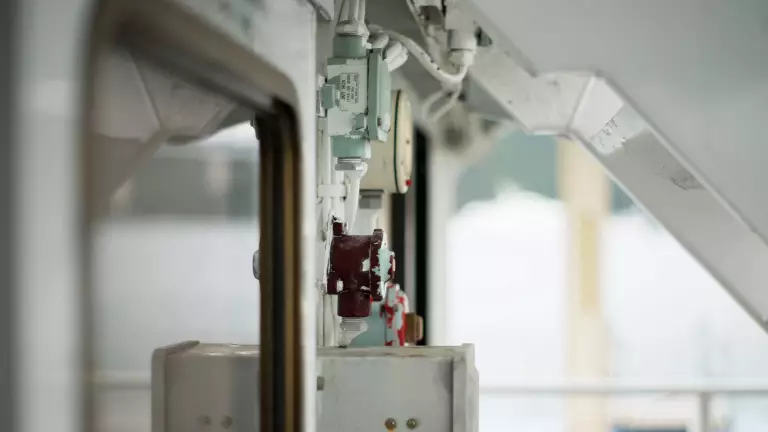Demand for critical care (also known as intensive care) in the US has grown by around 2% per year recently. This expansion is driven by a growing population that is living longer with more chronic conditions, and by the increasing concentration of complex care in hospitals as more care migrates to nonhospital settings. Those trends are all expected to continue unabated.
To meet the demand, health systems have historically invested in more critical-care beds and recruited more intensivists (doctors who care for critically ill patients). (See Exhibit 1.) However, that approach is both extremely costly and unsustainable because it results in a self-perpetuating build-and-hire cycle.
We have been working with clients to think more expansively about what the critical-care model of the future could look like. With the rise of artificial intelligence, tele-health, and more agile staffing models, health care systems are beginning to implement much more targeted ways to meet the growing demand for critical care while improving patient outcomes and managing costs. Through our work with clinicians, hospital administrators, and medical-technology clients, we have pinpointed several promising strategies that health system leaders can adopt. These approaches will help them move away from solutions that ultimately exacerbate the problem and allow them to redesign care in a way that both serves patients better and sets a more sustainable course for health care systems.
Move away from solutions that exacerbate the problem and redesign care to set a more sustainable course.
Breaking Out of the Build-and-Hire Cycle
Although many hospitals have coped with the growing demand for critical care by investing in greater capacity and recruiting more staff, this approach ultimately contributes to the inflation of health care costs in three ways.
First, the US already has more critical-care beds per 100,000 people than most other countries do: 19, compared with 13 in Canada, 9 in the Netherlands, and 4 in the UK. (See Exhibit 2.) US health systems are increasingly reluctant to invest in additional inpatient capacity because growth (and sometimes margin) is concentrated in the ambulatory setting. Instead, what’s needed is more effective and efficient use of existing inpatient capacity rather than expenditure on new capacity.
Second, intensivists are in high demand but short supply, which means they’re becoming more expensive. (See Exhibit 3.) A recent survey showed that compensation for intensivists is at the high end of medical subspecialties and rising faster than for any other specialty, at more than 8% per year since 2014.
Third, intensive care unit costs in the United States are already very high. The average cost of one day in a US critical-care unit (CCU) is approximately 35% higher than in Canada and 169% more than in Germany. If US health systems stick with the build-and-hire approach, this gap will only continue to widen.
Challenges in Today’s CCUs
To create a critical-care model that is both affordable and sustainable, health system executives first need to address four key challenges: overuse, staff shortages and attrition, fragmented systems, and inefficient management.
Overuse of CCUs. Overuse of critical-care beds puts undue pressure on capacity, increases the probability of medical complications such as infections and pressure ulcers, and ultimately raises the cost of a patient’s hospital stay. Overutilization can occur at any or all of the three steps in a patient’s journey:
- Admission to the CCU. In some cases, patients admitted to the CCU aren’t sick enough to require such a complex level of care, but physician preferences and a lack of available non-CCU hospital beds, among other factors, lead to admissions that could have been avoided. In other cases, CCU admission could have been averted or minimized if deterioration in a patient’s clinical condition had been predicted, identified, and addressed earlier.
- Care Progression. The intensity and pace of care delivered to CCU patients can be inconsistent across providers. For example, different clinicians can make different decisions about intubating and ventilating a patient, using invasive versus noninvasive monitoring, the types and degree of sedation administered, and the types and frequency of diagnostic testing (such as labs and imaging) that are ordered. These variations, driven by disparities in education, training, and personal preferences, can contribute to avoidable expense and extended stays in CCUs. Operational inefficiencies such as sending orders for testing or consultations in batches rather than as they occur can lead to undesirable peaks and troughs in workflow.
- Step-Down from CCU. The decision of when to move a patient out of the CCU rests not only on evidence-based criteria but also on a clinician’s judgment and his or her confidence in the quality of care that will be delivered elsewhere in the hospital. Even when a decision is made to transfer a patient to a general unit or to another service (such as palliative care or long-term acute care), other factors—such as unavailable beds, inefficient bed allocation processes, and a lack of necessary services—can delay transfer out of CCU.
Staff Shortages. Most CCUs in the United States report challenges with recruiting and retaining staff. Many of the new graduates trained at large teaching hospitals (where the number of CCU beds is increasing faster than at other hospitals), for example, leave after a few years in search of less demanding work. Other institutions report that their rigid staffing approach does not meet the expectations of a modern workforce, where employees want greater flexibility and opportunities for lateral as well as vertical career advancement. Similarly, the typical unit-specific approach to staffing can lead to misallocation of resources in the form of mismatches between the number of staff and the amount of work that needs to get done in each unit. This can lead to dissatisfaction, burnout, and attrition.
Most CCUs in the United States report challenges with recruiting and retaining staff.
Fragmented Systems. CCUs depend on multiple and different systems, many of which operate independently, and nurses and physicians report significant frustration with the level of fragmentation that these systems create in workflow. For example, a patient’s monitoring system, ventilator, infusion pumps, imaging, and electronic medical records may be completely independent and disconnected from one another. Therefore, physicians and nurses must pull information from multiple systems, mentally collate and interpret that information, and then document their work or make changes in each separate system. This requires replicating efforts and increases the probability of error.
Inefficient Management. At some hospitals, the major administrative components of each CCU—budgeting, staffing, capacity management, and admissions, for example—are still managed independently. In this model, each new admission requires negotiation among multiple parties, a process that is often coordinated by a clinician. This is not a good use of the clinician’s time, adding to his or her administrative burden and taking time away from patients.
The model can also limit understanding of enteprise-wide CCU economics because there can be multiple conflicting sources of information. What’s more, it can create perverse incentives, whereby clinical departments or specialties try to offload costs onto the CCU but keep associated revenue to enhance their departments’ apparent margins.
A Strategy to Unlock Value in Critical Care
To create the critical-care service of the future, health systems executives should consider the following five strategies.
Redefine Critical Care as a Set of Specialized Services. Hospital systems should conceptualize critical care as a set of services delivered by specialists rather than a set of discrete locations. Some of the services delivered within the CCU should also be made available to patients outside of that setting through the development of a mobile critical-care team, vascular access team, and ventilatory support team. The mobile critical-care team could focus on early and proactive intervention with patients at highest risk of admission to the CCU to prevent avoidable admissions. They could also monitor and manage step-down to lower levels of care to prevent readmission to the CCU. The vascular access team would advise on the best option to secure arterial or venous access to prevent overuse or misuse, and could also insert and manage vascular access lines across the hospital to reduce complications such as infections.
Hospital systems should conceptualize critical care as a set of services delivered by specialists rather than a set of discrete locations.
Finally, larger hospital systems may benefit from a team dedicated to managing patients who need only ventilatory support, to keep them out of the CCU setting if their clinical condition allows.
Optimize Management and Governance. Hospital systems should consider establishing one point of leadership over all critical-care services, including the services mentioned previously as well as subspecialized critical-care units such as cardiac surgery, neurosurgery, and burns. This leadership should be supported by integrated operational and financial reporting to monitor and manage the performance of those services and also to understand the drivers of demand for them. This can help optimize the balance of critical-care priorities for the institution as a whole against those for each individual unit and service.
Standardize and Digitize Key Clinical and Operational Decisions. Hospital systems can reduce variability and increase efficiency by using advanced analytics, machine learning, and digital technologies in the following ways:
- Assign scores to non-CCU patients based on risk of deterioration (over a 12-hour period, for example) to guide early proactive intervention by the mobile critical-care team, thereby preventing avoidable CCU admissions.
- Identify key intervention points along the patient journey that will drive the most clinical, operational, and financial value. These can include decision-making and operational processes related to CCU admission, ventilatory support, vascular access, invasive monitoring, and sedation.
- Develop and drive adoption of best clinical and operational practices at key intervention points by embedding them into existing clinical and operational workflows.
- Evaluate the effectiveness of any clinical or operational changes implemented at key intervention points and refine them over time.
Also, when purchasing or upgrading clinical systems and equipment, hospital systems should establish minimum requirements for interoperability, data capture, user experience, and workflow compatibility.
Improve the Management of Existing Hospital Capacity. Hospital systems should consider managing bed capacity centrally across all CCUs (including those specific to certain surgical subspecialties) to streamline the admissions process and optimize for the enterprise rather than for individual units. To increase the efficiency of individual CCUs, patients can be segmented by complexity to better match staffing ratios and capabilities with patient needs. They can also be segmented by likely duration of stay to improve continuity of care.
Hospital systems should also consider adding CCU-level care capabilities to some non-CCU beds to handle unexpected surges in demand such as during flu season or in the case of a major incident.
Build Flexibility and Agility into the Operating Model. There are several ways hospital systems can deploy staff more efficiently and effectively.
- Staff can be cross-trained to increase the interchangeability of nurses and technicians across locations.
- Employees can be deployed from a central pool to achieve optimal supply-demand matching if there are multiple CCUs located within a hospital or a metropolitan area.
- Tele-health solutions can provide after-hours support, especially for smaller, community, or satellite locations that cannot justify 24-hour on-site coverage or specialized services.
In addition, staff scheduling can be managed in a more agile way to manage peaks in demand or unexpected short-staffing situations more effectively. For example, hospitals can experiment with short-term, gig-economy-style staffing systems.
The demand for critical care is only going to rise in the coming years, and short-term fixes will become increasingly unsustainable and counterproductive. By taking action in the areas outlined here, health system leaders have an opportunity to improve outcomes for patients while controlling costs.











